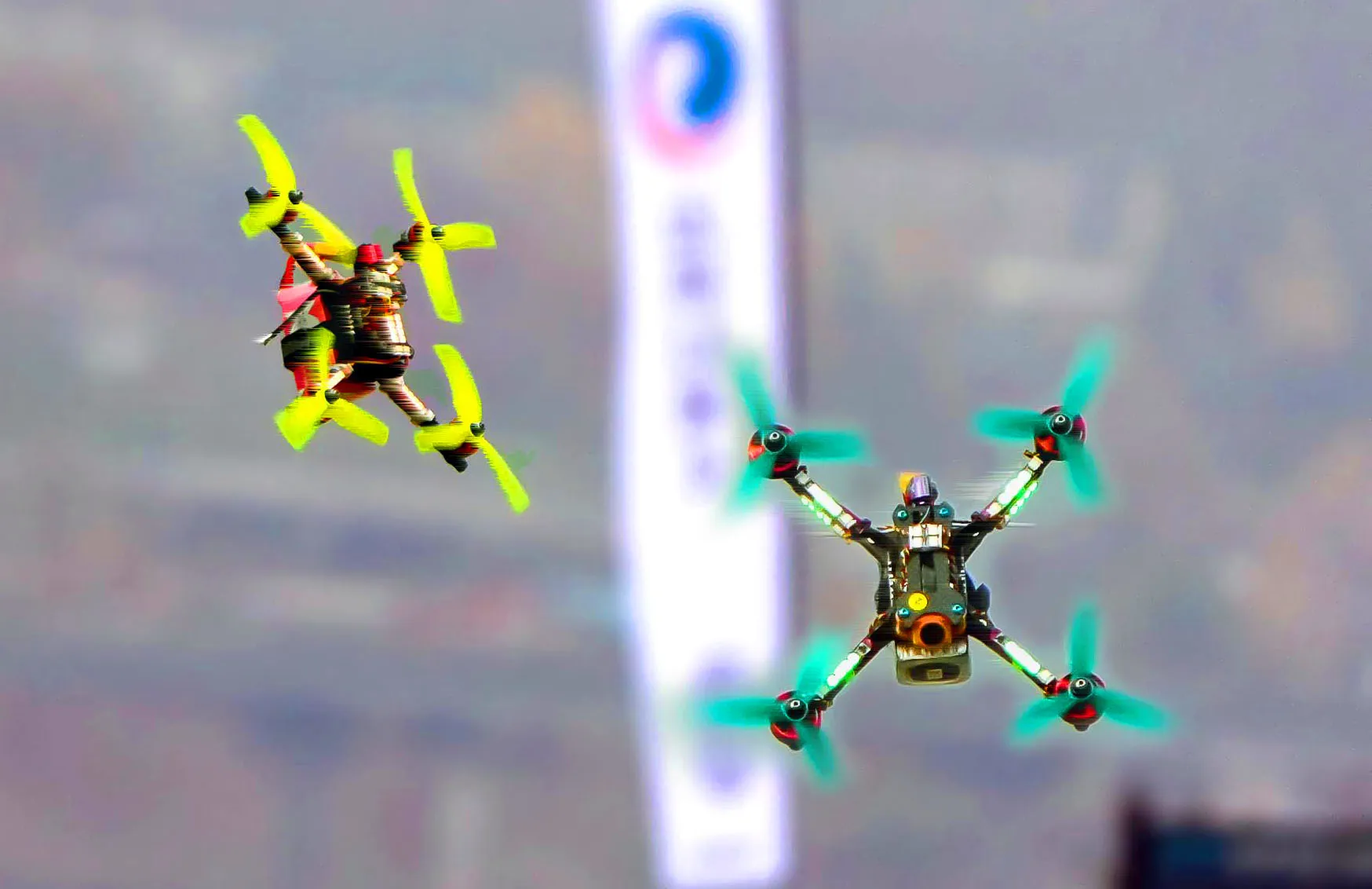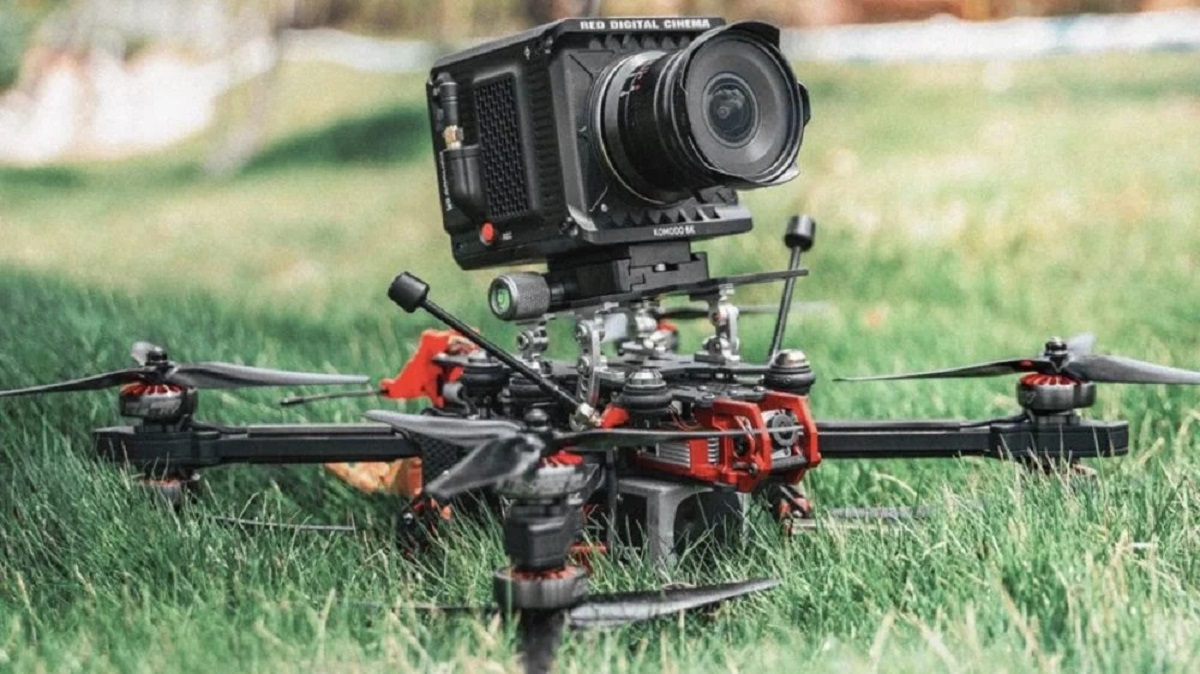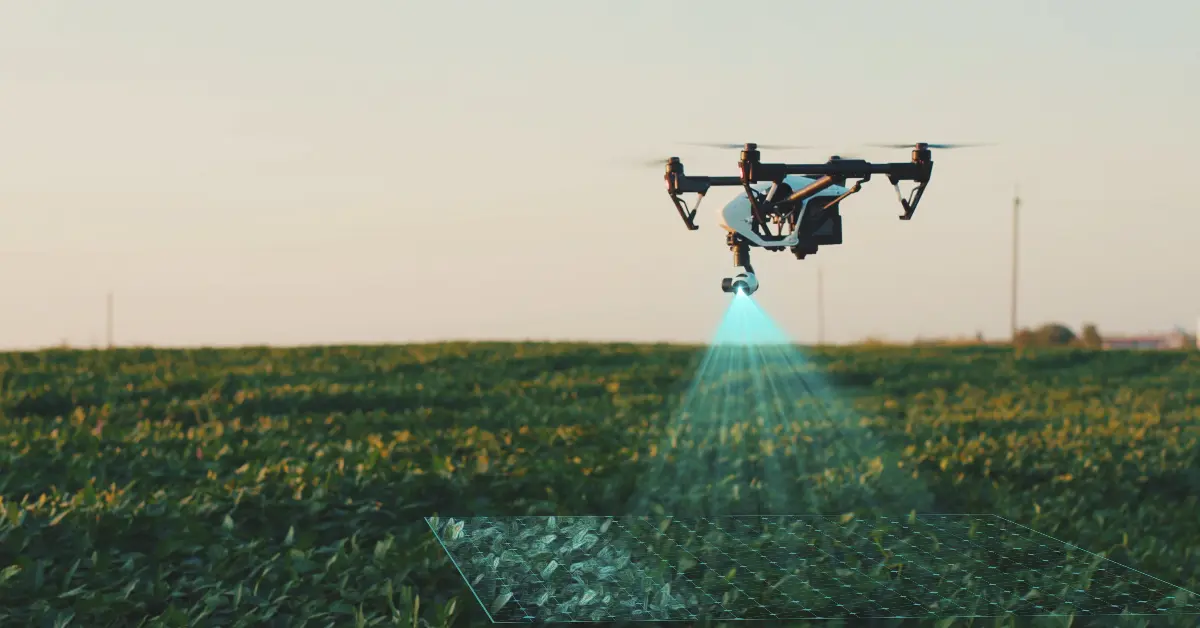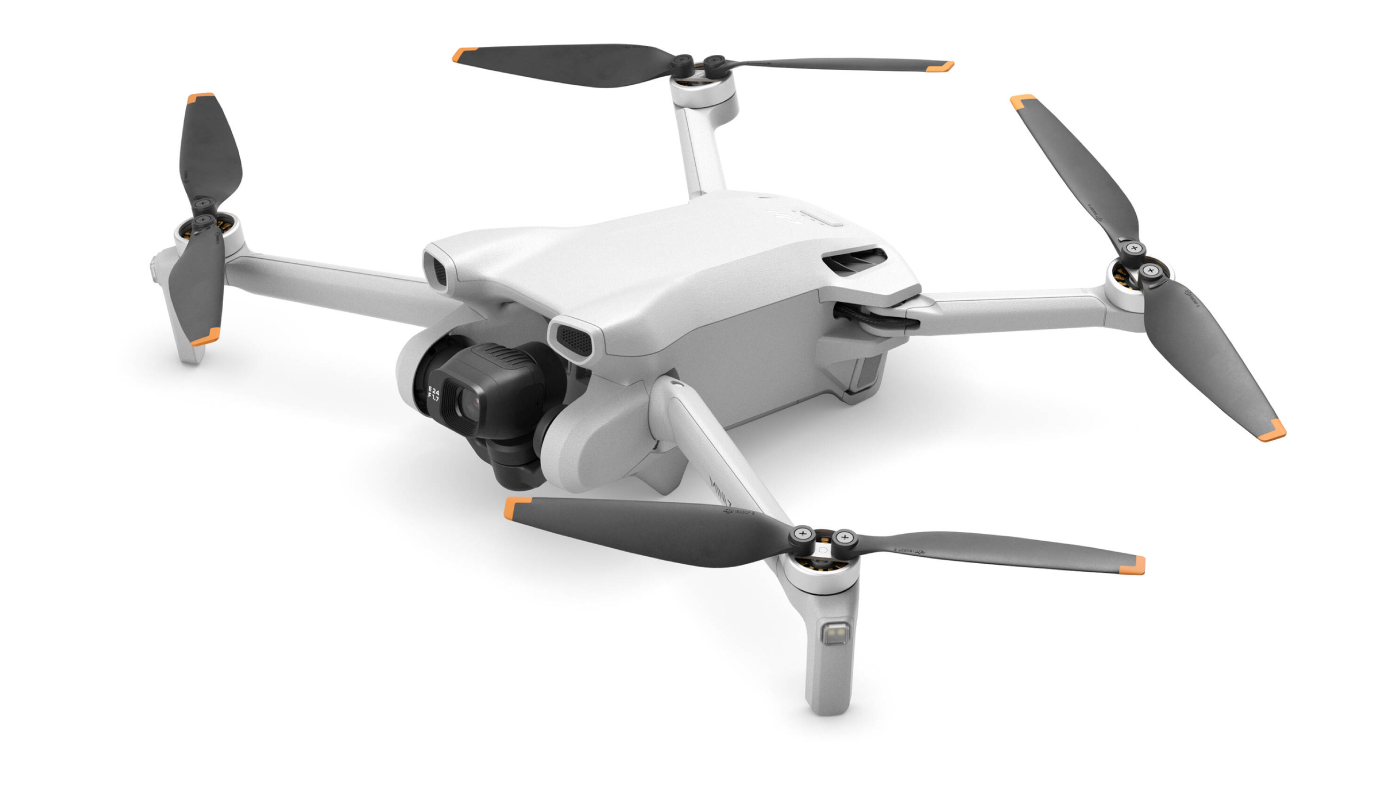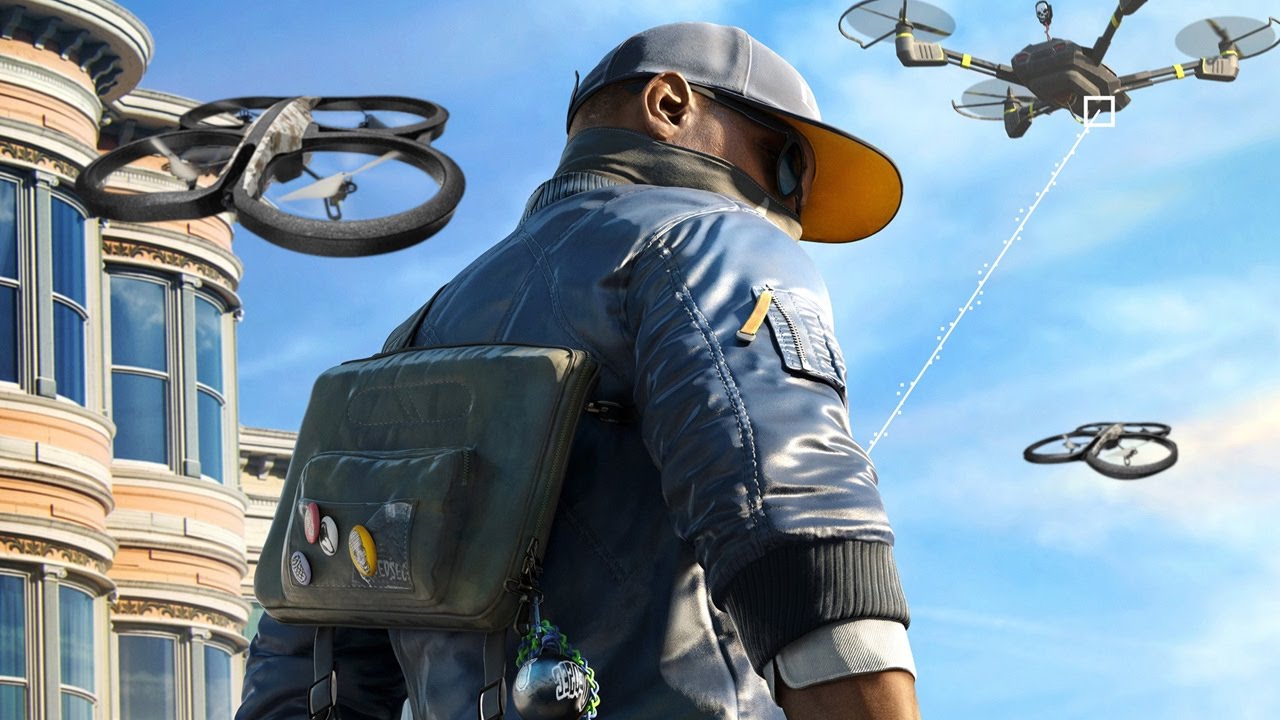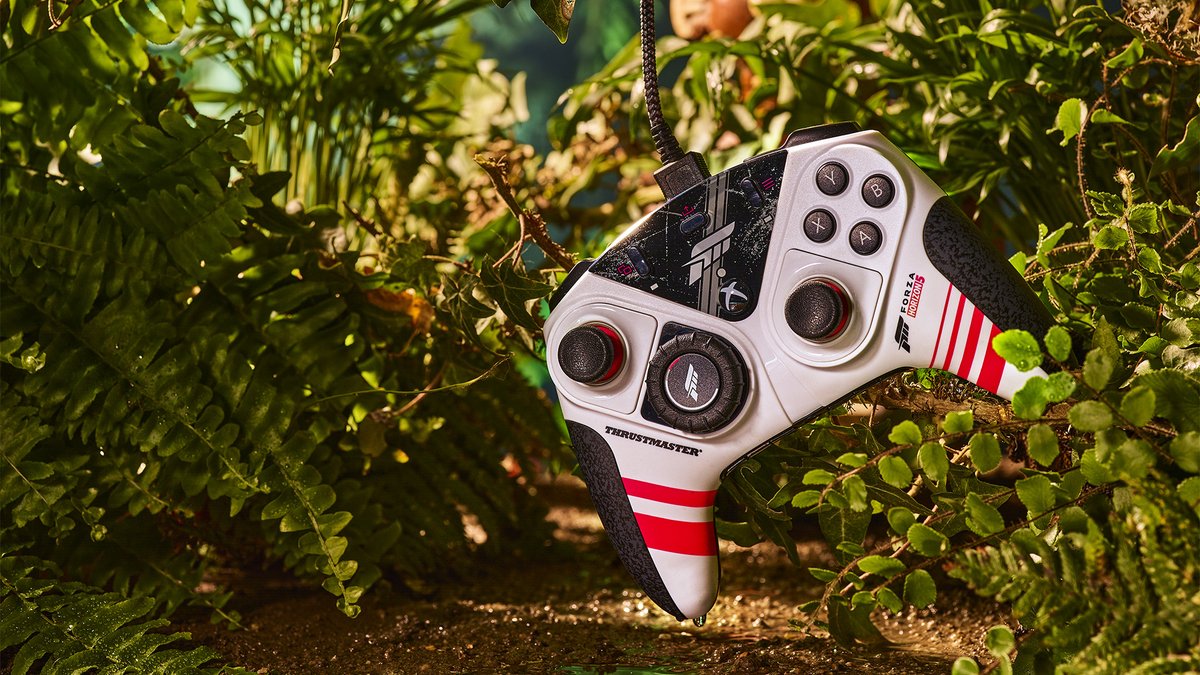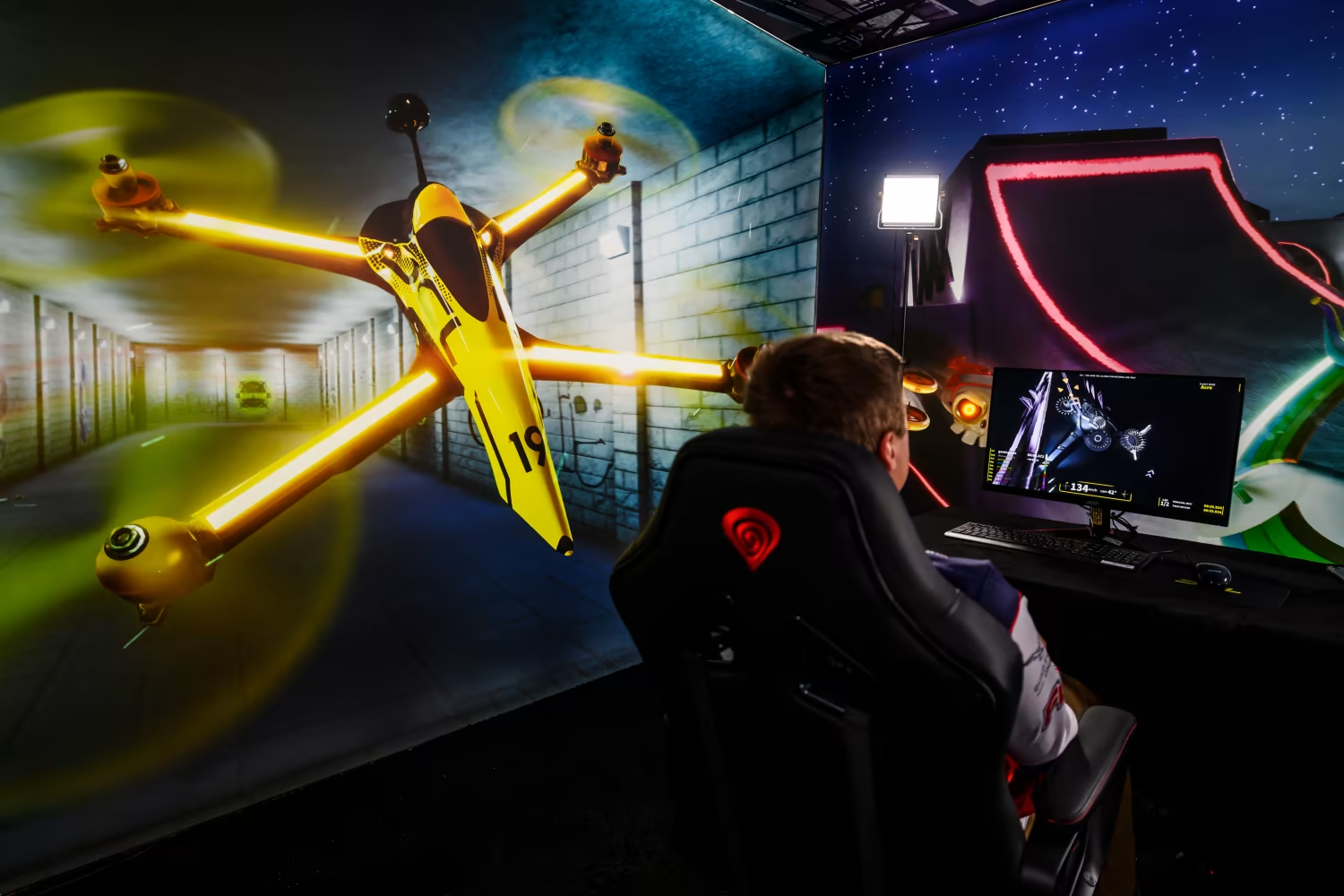Introduction
Welcome to the exhilarating world of drone racing! In this rapidly growing sport, pilots navigate small, agile drones through a designated course at high speeds, all while aiming for precision and speed. Drone racing combines the thrill of a high-speed chase with the technical skill and precision of remote control piloting. Whether you’re a novice looking to get started or an experienced pilot seeking to sharpen your skills, this guide will provide you with the essential knowledge to excel in this exciting sport.
Drone racing has gained immense popularity in recent years, captivating enthusiasts of all ages and backgrounds. What sets drone racing apart from traditional racing sports is its unique blend of real-time action, technological prowess, and the sheer adrenaline rush experienced by both pilots and spectators. The first-person view (FPV) perspective, where pilots wear goggles that display a live feed from the drone’s camera, adds another layer of immersion and excitement.
But before you jump headfirst into the world of drone racing, there are a few things you need to know. This guide will walk you through the essential steps to enter the world of drone racing, including selecting the right drone, understanding the rules and regulations, acquiring the necessary equipment, mastering drone control and maneuvers, strategizing for success, and finding like-minded communities and events.
Whether you aspire to compete at a professional level or simply enjoy the thrill of flying, drone racing offers an exhilarating experience that blends technology, skill, and camaraderie. So, strap in and prepare to soar through the air as we explore the exciting world of drone racing.
Choosing the Right Drone
When it comes to drone racing, selecting the right drone is crucial. A racing drone should be lightweight, agile, and equipped with the necessary features to ensure optimal performance on the racecourse. Here are some key factors to consider when choosing a drone for your racing endeavors.
1. Frame: The frame of a racing drone plays a significant role in its performance. Look for a frame that is lightweight yet durable, made from materials like carbon fiber or high-quality plastic. A sturdy frame will withstand crashes and collisions, which are inevitable in the fast-paced racing environment.
2. Motors: The motors are the powerhouse of a racing drone. Opt for brushless motors, as they provide more power and efficiency compared to their brushed counterparts. Look for motors with high RPM (rotations per minute) and a good thrust-to-weight ratio, as these factors contribute to faster acceleration and top speeds.
3. Flight Controller: The flight controller is the brain of your racing drone, responsible for stabilizing and controlling its flight. Choose a drone with a reliable flight controller that offers advanced features such as gyro stabilization and customizable flight modes. This will allow you to fine-tune your drone’s performance to match your racing style.
4. FPV System: The first-person view (FPV) system is an integral part of drone racing. Look for a drone that is compatible with FPV goggles or a monitor, providing a real-time video feed from the drone’s onboard camera. A low-latency FPV system will ensure minimal delay between your movements and the drone’s response, enhancing the immersive racing experience.
5. Battery Life: A drone with decent battery life is essential for longer racing sessions. Look for drones that offer a balance between flight time and power output. Consider purchasing extra batteries to extend your racing sessions and reduce downtime between races.
6. Spare Parts and Support: Accidents happen, especially in the fast-paced world of drone racing. Ensure that the drone you choose has easily accessible spare parts and a supportive community or manufacturer that can provide guidance and assistance in case of repairs or upgrades.
Remember, the right drone for you will ultimately depend on your budget, skill level, and racing goals. It’s always a good idea to do thorough research, read reviews, and seek advice from experienced racers before making a final decision.
By selecting a drone that meets your racing needs and preferences, you’ll be well on your way to experiencing the thrill of high-speed drone racing.
Understanding the Rules and Regulations
Before you hit the racecourse, it’s essential to familiarize yourself with the rules and regulations governing drone racing. Adhering to these guidelines not only ensures a fair and safe racing environment but also helps you avoid potential legal issues. Here are some key aspects to consider:
1. Local Regulations: Different regions and countries have varying regulations regarding drone flying. Familiarize yourself with the specific rules in your area, including any restrictions on flight altitude, designated flying areas, and required permits or licenses.
2. Race Organizers’ Rules: Each drone racing event or league will have its own set of rules that participants must adhere to. These rules typically cover aspects such as race format, drone specifications, safety guidelines, and penalties for rule violations. Make sure to thoroughly read and understand the organizer’s rules before participating in any races.
3. Safety Considerations: Safety should always be a top priority in drone racing. Follow general safety guidelines such as maintaining line of sight with your drone, avoiding flying near people or animals, and conducting pre-flight checks to ensure your drone is in proper working condition. Additionally, wearing safety gear such as goggles, gloves, and knee pads can provide added protection during races.
4. Spectator Etiquette: As a drone racer, it’s important to be mindful of spectators. Respect any designated areas for spectators, fly responsibly to avoid accidents, and be courteous when interacting with spectators or answering their questions.
5. Anti-Doping Regulations: Some professional drone racing leagues may have anti-doping regulations in place to maintain fair competition. Familiarize yourself with any prohibited substances or performance-enhancing measures, and ensure that you compete in a clean and sportsmanlike manner.
6. Insurance: Depending on your location and the nature of the race, it may be advisable to have liability insurance coverage for your drone. This can provide financial protection in case of accidents or damages caused during races.
By understanding and complying with the rules and regulations, you not only contribute to a safe and fair racing environment but also demonstrate your professionalism as a drone racer. Remember to stay updated with any rule changes and communicate with race organizers or officials if you have any questions or concerns.
Now that you have a good grasp of the rules and regulations, it’s time to dive into the exciting world of drone racing and put your knowledge to the test!
Essential Drone Racing Equipment
When it comes to drone racing, having the right equipment is essential to ensure optimal performance and a successful racing experience. Here are the key pieces of equipment you’ll need to get started:
1. Racing Drone: Of course, the most important piece of equipment is your racing drone. Choose a drone that meets your racing goals, as discussed in the previous section. Make sure it is lightweight, agile, and equipped with high-quality components for better performance on the racecourse.
2. Remote Controller: A reliable and responsive remote controller is crucial for precise control of your racing drone. Look for a controller with a comfortable grip, intuitive layout of controls, and good range to ensure optimal maneuverability during races.
3. FPV Goggles or Monitor: A first-person view (FPV) system is essential for immersive racing. FPV goggles provide an immersive experience, while a monitor can be a more accessible option. Make sure your goggles or monitor are compatible with your drone’s video feed and offer a clear, low-latency display.
4. Battery and Charger: Invest in high-capacity batteries that provide sufficient flight time for racing. It’s important to have multiple fully charged batteries on hand to minimize downtime between races. Additionally, a reliable battery charger with multiple charging ports will ensure your batteries are ready quickly.
5. Storage and Transport: To safely transport and store your racing drone and equipment, invest in a sturdy and appropriately sized carrying case or backpack. This will protect your gear from damage and make it easier to transport to race events.
6. Tools and Spare Parts: Accidents can happen during races, so it’s crucial to have a toolkit with essential tools such as screwdrivers, pliers, and spare propellers. Additionally, it’s a good idea to have spare parts like motors, frames, and electronic components to quickly repair any damage that might occur.
7. Safety Gear: Consider wearing safety gear such as goggles, gloves, and knee pads for added protection during races. While not mandatory, safety gear can help prevent injuries and ensure a more enjoyable racing experience.
8. Race Timing and Scoring System: If you plan on organizing races or participating in organized events, having a race timing and scoring system is essential. This system will help track lap times, calculate rankings, and provide a fair and accurate assessment of race performance.
By having the right equipment, you’ll be well-prepared to navigate the racecourse with confidence and finesse. Remember to regularly maintain and inspect your equipment to ensure optimal performance and address any issues before they become a hindrance during races.
Now that you have your essential drone racing equipment, let’s delve into the next steps to prepare for an exhilarating drone racing experience!
Preparing for a Drone Race
Preparing for a drone race goes beyond just having the right equipment. It involves careful planning, practice, and attention to detail. Here are some essential steps to help you get ready for a thrilling drone race:
1. Familiarize Yourself with the Race Course: Before the race, study the race course layout and understand the sequence of obstacles. This will help you plan your flying lines, anticipate turns, and identify potential challenges. If possible, practice flying on a similar course to familiarize yourself with the environment.
2. Practice, Practice, Practice: Consistent practice is key to improving your skills as a drone racer. Set aside dedicated time for practice sessions, focusing on refining various maneuvers, such as tight turns, power loops, and quick acceleration. Practice different race scenarios to enhance your decision-making and adaptability during races.
3. Master Race Starts and Landings: A strong start and smooth landing can make a significant difference in racing outcomes. Practice launching your drone quickly and efficiently, ensuring a solid takeoff. Similarly, practice controlled landings to avoid crashes or damage to your racing drone.
4. Optimize Your Drone’s Performance: Fine-tune your racing drone to optimize its performance on the racecourse. Experiment with different props, flight controller settings, and PID tuning to find the setup that suits your flying style best. Regularly check and maintain your drone, ensuring that all components are in optimal condition for race day.
5. Develop Pre-Flight Checklists: Establish a pre-flight checklist to help you ensure that everything is in order before each race. This checklist may include items such as checking the battery levels, inspecting the drone’s components for damage, calibrating the gyroscope, and verifying the FPV system’s signal strength. Following a pre-flight checklist helps minimize the risk of technical issues during a race.
6. Stay Calm and Focused: Drone racing can induce adrenaline and excitement, which may affect your performance. Practice techniques such as controlled breathing and visualization to help manage stress and maintain focus during races. Clear your mind and concentrate on flying, making split-second decisions and adapting to the ever-changing race environment.
7. Learn from Other Racers: Engage with experienced drone racers to gain insights and tips. Attend local races or join online communities to connect with fellow racers, exchange knowledge, and learn from their experiences. This interaction can provide valuable information and strategies to improve your racing skills.
8. Time Management: During a race, timing is crucial. Develop a sense of time management by practicing lap timing and improving your lap times progressively. Efficiently plan your strategies, anticipate your competitors’ moves, and make quick decisions that maximize your racing performance.
By following these steps, you’ll be well-prepared and confident for your upcoming drone race. Remember, preparation and practice are the keys to success in the exhilarating world of drone racing.
Mastering Drone Control and Maneuvers
Drone racing demands precise control and mastery of various maneuvers to navigate the racecourse with speed and agility. Here are some essential techniques to help you improve your drone control skills:
1. Throttle Control: The throttle controls the altitude and speed of your drone. Practice maintaining a consistent throttle position, making smooth adjustments to control the ascent and descent of your drone. This skill is crucial for navigating obstacles and executing precise maneuvers.
2. Cornering and Turns: Mastering cornering and turns is essential for maintaining speed and efficiency on the racecourse. Learn to execute both tight and wide turns, controlling the roll and yaw of your drone smoothly. Practice adjusting your throttle and tilting your drone to execute a smooth and controlled turn.
3. Power Loops and Inverted Flying: Advanced maneuvers like power loops and inverted flying can provide a competitive edge in drone racing. These maneuvers require precise control of pitch, roll, and throttle. Practice executing power loops, where the drone performs a full loop while maintaining forward momentum. Likewise, practice flying your drone upside down or inverted, mastering the controls in this challenging flight orientation.
4. Acceleration and Deceleration: Proactively controlling your drone’s acceleration and deceleration plays a crucial role in achieving faster lap times. Practice smoothly increasing the throttle to reach maximum speed at the right moments and decelerating efficiently to navigate tight turns or obstacles without sacrificing control.
5. Flips and Rolls: Flips and rolls are impressive aerial maneuvers that add a dynamic element to your racing style. Practice executing flips (forward or backward rotations) and rolls (sideways rotations) with precision, maintaining control and stability throughout the maneuvers. Incorporate these tricks strategically to impress judges or gain a competitive advantage during races.
6. Stabilizing Techniques: In a fast-paced racing environment, maintaining stability is crucial. Practice techniques such as using yaw controls to stabilize your drone during turns, adjusting throttle to counteract wind or turbulence, and making small adjustments to ensure a smooth flight path.
7. Freestyle Flying: While drone racing is primarily focused on speed and precision, incorporating freestyle elements can set you apart as a skilled drone pilot. Experiment with creative flips, rolls, and combinations of maneuvers to showcase your aerial acrobatic skills during practice sessions or freestyle events.
8. Simulators and Training Programs: Utilize drone flight simulators and training programs to enhance your drone control and maneuvering skills. These tools provide a virtual environment to practice various maneuvers, improve hand-eye coordination, and refine your reaction times without the risk of damaging your drone.
Remember, mastering drone control and maneuvers takes time and practice. Dedicate regular practice sessions to refine your skills, gradually pushing the boundaries of your abilities. Embrace the challenge, be patient with yourself, and enjoy the journey of becoming a skilled drone pilot.
Strategies for Success in Drone Racing
Drone racing is not just about flying fast; it requires strategic thinking and tactical awareness to outmaneuver your competitors and secure victory on the racecourse. Here are some key strategies to help you achieve success in drone racing:
1. Study the Racecourse: Before each race, take the time to thoroughly analyze the racecourse layout and study the positioning of obstacles. Identify areas where you can gain an advantage, plan your flying lines, and strategize for efficient turns and overtaking opportunities.
2. Start Fast and Consistent: A strong start can provide an early advantage in a race. Practice launching your drone quickly and smoothly, aiming to gain a favorable position from the beginning. Focus on consistency in your flying, minimizing mistakes and maintaining a steady pace throughout the race.
3. Analyze Competitors: Observe and learn from your competitors. Pay attention to their flying techniques, lines, and maneuvers. Analyzing their strategies can help you identify areas where you can improve and develop counter-strategies to outperform them on the track.
4. Choose the Right Racing Line: Mastering the racing line is crucial for achieving optimal speed and efficiency. Experiment with different lines, both wide and tight, depending on the course layout and the position of obstacles. Identify sections where you can take tighter lines to gain an advantage by reducing the distance and time needed to complete the course.
5. Anticipate Obstacles and Adjust: Always be aware of upcoming obstacles on the racecourse and anticipate their impact on your flight path. Practice quick decision-making and agility to adjust your drone’s trajectory and speed to maneuver through obstacles swiftly and efficiently.
6. Strategic Use of Boosts: Some drone racing tracks may feature boost pads or zones that provide temporary speed increases. Strategically plan when to utilize these boosts to gain an advantage or overtake competitors. Timing and positioning are crucial to maximizing the benefits of the speed boost.
7. Pit Stop Efficiency: If your race involves multiple heats or longer durations, efficient pit stops can make a significant difference. Practice quick battery changes and ensure your pit crew is well-prepared to minimize downtime. Optimize your pit stop strategy by timing it strategically, avoiding heavy traffic areas or potential collisions during the change.
8. Mental Focus and Endurance: Drone racing can be mentally and physically demanding. Strengthen your mental focus and endurance through practice and training. Develop concentration techniques, manage your nerves, and build stamina to maintain peak performance throughout the race.
Remember, the key to success in drone racing is a combination of skill, strategy, and adaptability. Continuously hone your skills, learn from your experiences, and embrace the thrill of the competition. With practice and a strategic mindset, you’ll be well on your way to achieving success in the exciting world of drone racing.
Maintaining and Repairing Your Racing Drone
Maintaining and repairing your racing drone is crucial to ensure its longevity and optimal performance. Regular maintenance and timely repairs contribute to consistent performance, reduced downtime, and a longer lifespan for your drone. Here are some essential tips to help you keep your racing drone in top shape:
1. Pre-Flight Inspections: Before each flight, conduct a thorough pre-flight inspection of your drone. Check for any visible damage to the frame, propellers, motors, and electronic components. Ensure that all connections are secure, and the batteries are charged to their optimal capacity. This inspection helps identify any issues that need to be addressed before taking off.
2. Clean and Protect: After each flying session, clean your drone to remove any dirt, dust, or debris that may have accumulated. Use a brush or compressed air to clean the motors and other hard-to-reach areas. Avoid using excessive force that could damage delicate components. Consider using a protective cover or a carrying case to shield your drone from potential damage during transport.
3. Motor Maintenance: The motors are critical components of your racing drone. Regularly inspect and clean the motors, removing any debris that could affect their performance. Consider using motor guards or protectors to minimize the risk of damage during crashes or collisions.
4. Propeller Care: Inspect your propellers before and after each flight. Look for any signs of wear or damage, such as cracks or bent blades. Replace damaged propellers promptly to maintain optimal performance and prevent accidents during flights. Consider carrying spare propellers with you to races or practice sessions.
5. Battery Management: Proper battery management is essential for longer flight times and the overall health of your racing drone. Follow manufacturer guidelines for charging and discharging your batteries, and avoid overcharging or deep discharging them. Store your batteries in a cool and dry place, and regularly check for any signs of swelling or deterioration. Replace older or damaged batteries to prevent potential issues during flights.
6. Firmware Updates: Keep your drone’s firmware and flight controller software up to date. Manufacturers often release updates that improve performance, stability, and add new features. Regularly check for updates and follow the instructions to ensure your drone is running the latest firmware version.
7. Repairing Damages: Accidents happen, and it’s essential to know how to repair your racing drone. Familiarize yourself with the specific repair processes for your drone model, including replacing damaged components, soldering connections, and calibrating sensors. Seek guidance from experienced pilots or online resources if you’re not confident in your repair skills.
8. Seek Professional Assistance: If you encounter complex issues or major damage, it’s advisable to seek professional help. Authorized repair centers or experienced drone technicians have the expertise and specialized equipment to diagnose and fix more complicated problems, ensuring the safety and performance of your drone.
By following these maintenance and repair guidelines, you’ll be able to keep your racing drone in excellent condition, optimize its performance, and minimize any potential disruption to your flying experiences. Remember, a well-maintained and properly repaired drone is key to achieving consistent results and enjoying the thrill of drone racing.
Finding Drone Racing Communities and Events
Being part of a drone racing community can greatly enhance your racing experience. It allows you to connect with fellow drone enthusiasts, learn from experienced racers, and participate in organized events. Here are some tips to help you find drone racing communities and events:
1. Local Drone Clubs: Check if there are any local drone clubs or groups in your area. These clubs often organize regular meetups, practice sessions, and friendly races. Joining a local club gives you the opportunity to interact with like-minded individuals, learn from experienced racers, and share your knowledge and experiences.
2. Online Communities: Explore online forums, social media groups, and dedicated drone racing communities to connect with pilots from all over the world. These communities provide platforms for discussion, sharing tips and tricks, and organizing online races or challenges. Engage actively in these communities to expand your network and gain valuable insights from experienced racers.
3. Drone Racing Leagues: Several organized drone racing leagues exist, offering competitive racing events at both regional and national levels. Research and identify leagues that operate in your area and check their websites or social media channels for upcoming events. These leagues often have structured race formats, provide official rankings, and offer opportunities to compete with skilled pilots.
4. Local Hobby Shops: Visit local hobby shops that specialize in drones and remote-controlled aircraft. They often have bulletin boards or information about drone racing events in the area. Additionally, the staff may have knowledge about local racing communities or events and can provide valuable insights and recommendations.
5. Attend Workshops and Training Sessions: Look for workshops or training sessions conducted by experienced drone racers or organizations. These events offer a chance to receive hands-on guidance, learn new techniques, and network with other aspiring racers. Workshops can provide valuable knowledge and help you build your skills as a drone racer.
6. Spectate at Drone Races: Attend drone racing events in your area as a spectator. This allows you to witness firsthand the excitement, techniques, and strategies employed by top-notch drone racers. Spectating also provides an opportunity to network with participants and organizers, expanding your racing connections.
7. Create Your Own Races: If you can’t find established racing communities or events in your area, consider organizing your own races. Gather a group of drone enthusiasts, set up a course in a safe location, and host friendly races. This not only allows you to practice your racing skills but also encourages the growth of the drone racing community in your area.
8. Participate in Online Competitions: Look for online drone racing competitions or challenges. These virtual events allow you to compete against pilots from around the world without geographical limitations. Participating in online competitions can help improve your skills, gain exposure, and connect with other racers in the global drone community.
By actively participating in drone racing communities and events, you can immerse yourself in the sport, connect with fellow racers, and take your skills to new heights. The sense of camaraderie, shared passion, and friendly competition will make your drone racing journey even more enjoyable and rewarding.
Conclusion
Congratulations! You’ve now gained valuable insights into the world of drone racing, from choosing the right drone to mastering control and finding racing communities. Drone racing is an exhilarating sport that combines technical skill, precision, and strategic thinking. As you embark on your drone racing journey, remember these key takeaways:
First and foremost, selecting the right drone is crucial. Consider factors such as frame material, motors, flight controller, and FPV system to ensure optimal performance on the racecourse.
Familiarizing yourself with the rules and regulations is essential to maintaining a safe and fair racing environment while avoiding legal complications. Comply with local regulations and race organizer rules to compete with integrity.
Invest in essential drone racing equipment such as a reliable remote controller, FPV goggles or monitor, spare parts, and safety gear to enhance your racing experience.
To succeed in drone racing, focus on mastering drone control and maneuvering techniques. Practice throttle control, precise cornering, power loops, and flips to gain an edge over your competitors.
Develop strategic thinking by assessing the racecourse, analyzing competitors, choosing the right racing line, and using boosts strategically. Remember to maintain mental focus and endurance throughout races.
Regular maintenance and repair of your racing drone are crucial for its longevity and optimal performance. Conduct pre-flight inspections, clean your drone after each flight, and promptly repair any damages to ensure consistent performance.
Lastly, seek out drone racing communities and events to connect with like-minded individuals, learn from experienced racers, and participate in races. Local drone clubs, online communities, and drone racing leagues provide excellent opportunities for networking and growth.
With a blend of practice, dedication, and a competitive spirit, you’re well on your way to becoming a skilled drone racer. So, strap on your goggles, charge your batteries, and embrace the thrill and excitement of drone racing. It’s time to take to the skies and experience the joy of high-speed flight!







